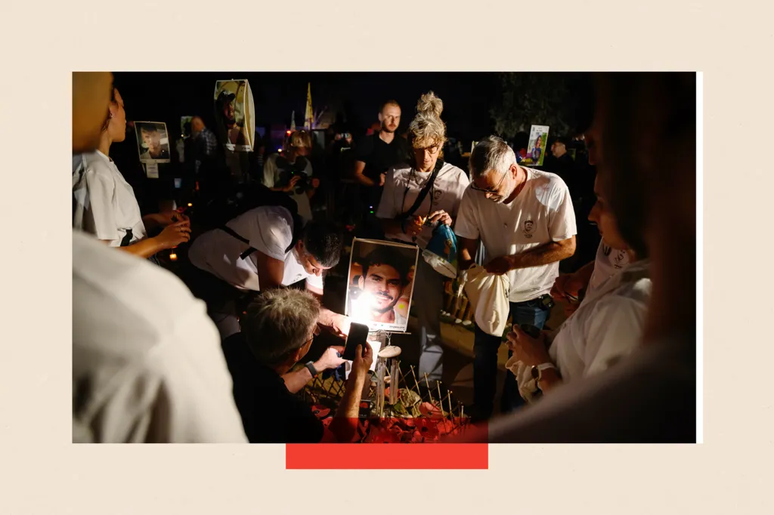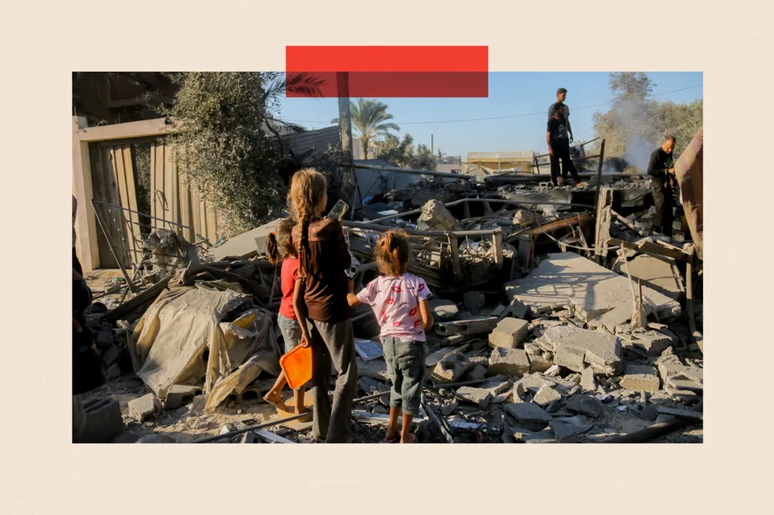Clashes have spread to the region since October 7, when the conflict between Israelis and Palestinians took on major proportions.
A year ago, frightening images arrived from the Middle East.
Israel was still recovering from the worst attack in its history, but it was already carrying out the bombings that devastated the Gaza Strip, bringing about a complete turning point in the region.
The conflict between Israelis and Palestinians, practically forgotten in the news for years, has suddenly returned to invade our screens. And everyone seemed to have been taken by surprise.
Just a week before the attacks, US national security advisor Jake Sullivan had said that “the Middle East region” was experiencing “the most peaceful period in two decades”.
A year has passed and the region is on fire. More than 41,000 Palestinians were killed and two million residents of the Gaza Strip were displaced.
In the West Bank, another 600 Palestinians were killed. In Lebanon, one million people are homeless and more than 2,000 have been killed.
More than 1,200 Israelis were killed in the attack that first day. Since then, Israel has lost 350 soldiers in the Gaza Strip and 200,000 Israelis have been forced from their homes near Gaza and its volatile border with Lebanon in the country’s north. And around 50 soldiers and civilians were killed by missiles launched by Hezbollah.
Throughout the Middle East, other forces joined the fighting.
The United States has worked tirelessly to prevent the crisis from worsening, with presidential visits, countless diplomatic missions and the deployment of massive military resources. But there were no results.
Missiles have also been fired from places as far away as Israel, such as Iraq and Yemen. Iran and Israel, two mortal enemies, have also clashed and it is almost certain that more attacks will follow.
Rarely has Washington’s influence been so small as in this conflict.
As the fighting spreads, his origins are forgotten.
The lives of the inhabitants of the Gaza Strip, before and after October 7, 2023, have been all but forgotten, with the press eagerly anticipating a possible “total war” in the Middle East. And even the Israelis whose lives were turned upside down on that terrible day feel equally neglected.
“We have been pushed aside,” Yehuda Cohen, father of hostage Nimrod Cohen, complained to Israeli network Kan News last week.
Cohen held Israeli Prime Minister Benjamin Netanyahu responsible for a “senseless war that has turned us against every possible enemy. He is doing everything he can to turn the October 7 event into a minor affair, with great success.”

Not all Israelis agree with Cohen’s point of view. Today, many see the Hamas attacks a year ago as a harbinger of a broader campaign by Israel’s enemies to destroy the Jewish state.
Israel’s response – with the blast of beepers, targeted killings, long-range bombings and intelligence operations that have long been a source of pride for the country – has restored some of the self-confidence lost a year ago.
“There is no place in the Middle East that Israel cannot reach,” Netanyahu declared confidently last week.
After October 7, the prime minister’s rating hit rock bottom for months. Now he sees his popularity growing again. Would it be a license for new acts of audacity?
Where will it end?
“None of us know when the dance will end and where everyone will be at that time,” former British ambassador to Iran Simon Grass said on the BBC’s Today podcast on October 3.
The United States remains involved, even if the visit to Israel by the head of the American Central Command (Centcom), General Michael Kurilla, seems more an act of crisis management than a study of diplomatic solutions.
With just four weeks until the US presidential election and with the Middle East more politically toxic than ever, this does not seem like an opportunity for new initiatives from the United States.
The immediate challenge is simply to avoid a larger regional conflict.
There is consensus among allies that Israel has the right – and even the duty – to respond to the Iranian missile attack in early October.
No Israelis were killed in the attack and Iran apparently aimed to hit military and intelligence targets. However, Netanyahu promised a forceful response.

After weeks of surprising tactical victories, the Israeli prime minister appears to have big ambitions. In a speech to the Iranian people, he indicated that Tehran is close to regime change.
“When Iran is finally free, and that time will come much sooner than people think, everything will be different,” he said.
For some observers, his rhetoric brought back uncomfortable memories of the points made by American neoconservatives during the lead-up to the 2003 US invasion of Iraq.
But despite all the current risks, fragile protection mechanisms still exist.
The Iranian regime may dream of a world without Israel, but it knows that Iran is still too weak to face the region’s only superpower, especially at a time when Hezbollah and Hamas, their allies and proxies in the so-called “Axis of Resistance ”, , are annihilated.
Israel would also deeply like to free itself from the threat posed by Iran, but it also knows that it cannot do it alone, despite its recent successes.
Regime change in Iran is not on President Joe Biden’s agenda, nor that of his deputy, Kamala Harris.
As for Donald Trump, the only time he felt tempted to attack Iran was in June 2019, when Tehran shot down an American surveillance drone. But the former president backed out at the last moment, despite ordering the assassination of a top Iranian general, Qasem Soleimani, seven months later.
Few people would have imagined a year ago that the Middle East was heading for its most dangerous moment in decades. But looking in the manta ray’s rearview mirror, the last 12 months appear to have followed terrible logic.
With so much debris scattered along the route and events still unfolding at an alarming speed, authorities and everyone else continue to struggle to keep up with the situation.
The conflict in the Gaza Strip has dragged on into its second year, and discussions about the “day after” – how to rehabilitate and govern the Gaza Strip when the fighting ends – have simply disappeared, overshadowed by the shocks of a wider war.
Also gone is any trace of discussion about a possible resolution of the conflict between Israel and the Palestinians, which is what brought us here.
At some point, when Israel believes it has done enough damage to Hamas and Hezbollah, after Iran and Israel have clarified their positions (assuming their actions do not plunge the region into an even deeper crisis), and when the American presidential election decision will be decidedly made, perhaps diplomacy can have a new chance.
But at the moment this still seems like a distant goal.
Source: Terra
Rose James is a Gossipify movie and series reviewer known for her in-depth analysis and unique perspective on the latest releases. With a background in film studies, she provides engaging and informative reviews, and keeps readers up to date with industry trends and emerging talents.







